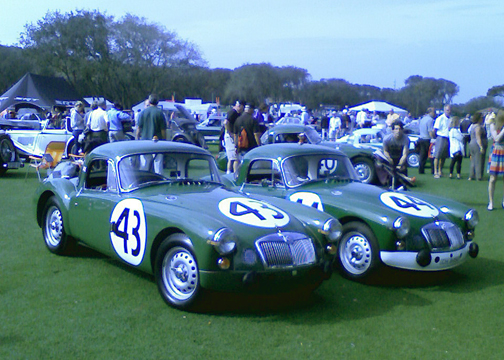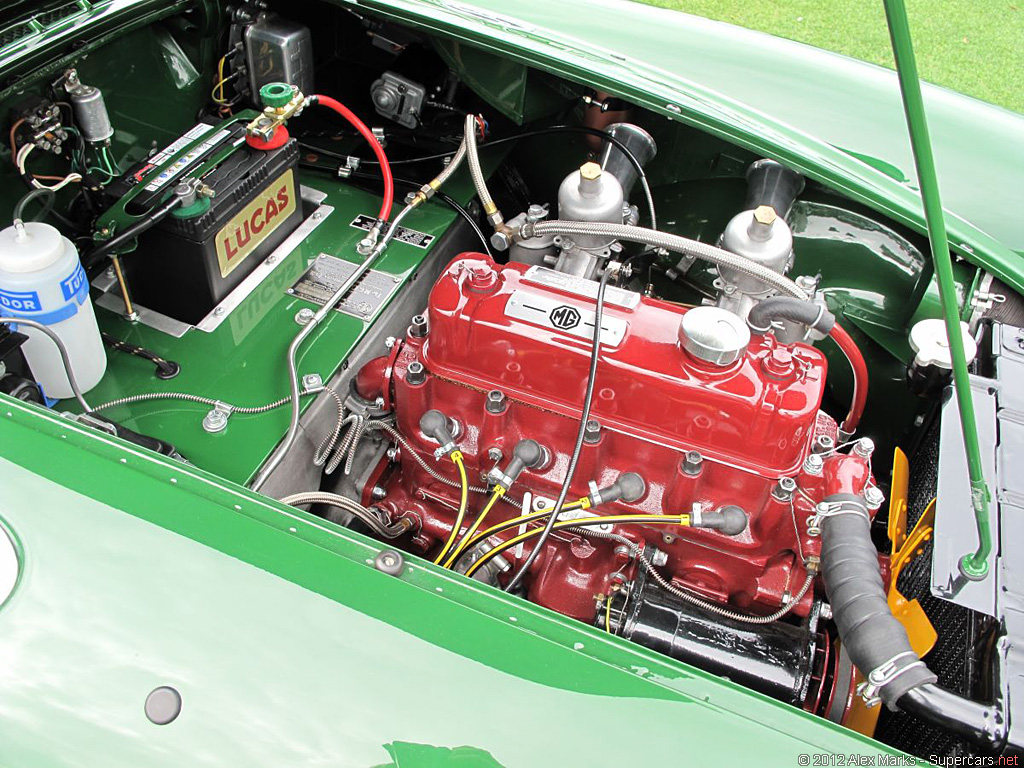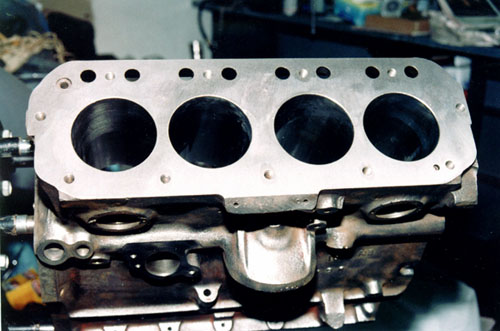When the Twin Cam engine arrived in 1958, MG was finally able to deliver the power that MGA buyers had been craving for several model years. Fulfilling that promise proved difficult, however, as reliability problems cut short the career of the MGA Twin Cam: MG halted production partway through 1959 after building just 2111 units. Today, driving a well-sorted MGA Twin Cam is nothing short of magical.
The 1959 running of the Alpine Rally, which linked famous mountain passes in Germany, Switzerland, Austria and Italy, turned grim for the MG factory entry when John Milne and Stuart Turner crashed their MGA Twin Cam. But for Den Green, the deputy foreman of the mechanics crew, the bad news was just beginning to arrive.
“I was sent off to a local garage to try to find some suspension parts to get the car going again and found a garage with a couple of ‘dead’ Twin Cams,” he recalls in Mike Allison and Peter Browning’s book, “The Works MGs.” These were, he continues, “All customers’ cars suffering from the dreaded engine problems. I asked the garage owner if I could ‘borrow’ some of the suspension parts from one of these cars and replace them with new parts I would arrange to be sent out from England. But when he discovered that I worked for MG he gave me hell about the unreliability of Twin Cam engines and threw me out of the place.”
That’s what you’d call direct customer feedback.

From the Le Mans Special
The Twin Cam was supposed to have been the crowning achievement for the MGA, which had debuted in 1955 to deliver a much-needed breath of fresh air for MG. The car was derived directly from the experimental MG TD special that George “Phil” Phillips had entered at Le Mans in 1951. Philips was a strong MG supporter and wanted nothing but an MG, but he was aware that all the company had on offer was the aging TD.
Help came from MG’s development department, which agreed to create an advanced-looking, lightweight body for the TD. Phillips’s MG TD special had to retire from the race at the eight-hour mark due to engine problems, but the effort had shown that the company was prepared to move away from its traditional, bulky approach to sports car styling and follow the lead already embraced by the competition. Sleek was ready to move in.
Within MG, work started on evolved, wider prototypes based on the TD special. Unfortunately, the company found itself just then under the newly formed British Motor Company umbrella. By the time MG came up with a proposal for the MGA, the top brass at BMC had already been sold on the Austin-Healey 100/4 by Donald Healey. There was no place for two competing roadsters within the extended family, so the MGA went on the backburner.

It wasn’t until late in 1954 that MG finally got the green light to start up production of the MGA. Although the manufacturer had been slow to release a modern roadster, it countered that history with a most impressive introduction for the MGA, entering three prototypes of the car for Le Mans in 1955. It was the first time in 20 years that MG had entered the race with a works entry.
That running of Le Mans was most memorably marred by tragedy when Pierre Levegh’s Mercedes-Benz 300 SLR took off into the crowd, killing 83 and injuring 170, but despite the pall cast over the event, the MGAs made their mark. Ken Miles and Johnny Lockett finished 12th overall and fifth in class, averaging 86 mph and recording a top speed of almost 120 mph on the long Mulsanne Straight.
The enthusiastic press reports that followed meant that by the time the MGA made its world debut in September 1955 at the Frankfurt Motor Show, the public was already anxious and waiting. Launched under the slogan “first of a new line,” the MGA was a clear departure from the old style.
The new car found buyers eager for just that. In 1956, the first full year of production, the Abingdon factory was rolling out 300 MGAs per week. Most of them were bound for the United States, creating the lucrative export market BMC directors were hungry to explore.
Poised for Coronation
The form may have been advanced, but the underpinnings were trusted familiars since the suspension design was much like its T-series predecessor— and even shared a few parts.
The B-series BMC 1500 engine used in the car, however, was new. At first it gave the MGA 68 horsepower, but output would progress to 78 horsepower. The car could reach 98 mph and accelerate to 60 mph in 15.6 seconds. Later on, a 1600cc engine upped power to 79.5 horsepower.

The MGA was pleasing to the eye and fun to drive. It was also a runaway success. Still, it awaited its ultimate coronation in the form of a truly sporting engine. That, alas, was the task bestowed upon the Twin Cam, which was supposed to give the MGA the fighting power it needed to toss it out with the more powerful cars in the class.
At first glance, the Twin Cam engine more than delivered. Capacity of the B-series engine was increased to 1588cc, connecting rods were strengthened, and special pistons were delivered in order to run a 9.9:1 compression ratio. The engine also received a cross-flow cylinder head topped with shiny alloy cam covers, while twin SU carburetors fed it. The result was a very impressive 108 horsepower at 6700 rpm. The production MGA Twin Cam could reach 113 mph, while the zero-to-60 time had been chopped to 9.1 seconds.
The car also received disc brakes all around along with knock-off wheels. It’s the wheels, along with the Twin Cam badge on the hood, that provide the exterior visual clues that this is no ordinary MGA. MG offered the Twin Cam in both roadster and coupe form.
The Twin Cam outperformed the standard MGA, but it also cost more; it cost more than the competition, too. Compounding that disadvantage was the fact that the MGA Twin Cam turned out to be a bit of a nightmare to own. Thanks to the high compression ratio, only the best fuel and most perfect ignition timing would suffice; lax owners would be rewarded with holes in the pistons. The engine also had an unhealthy appetite for oil.
By the time MG got on top of the problems, the Twin Cam’s reputation was sunk. Although MG produced just those 2111 Twin Cams, the manufacturer delivered more than 101,000 standard MGAs.
Sebring Glory
Despite the issues, the Twin Cam had its moments in the sun. In the car’s first serious rally outing, the 1958 Marathon de la Route—a 3100-mile, nonstop effort from Liège, Belgium, to Rome and back—it finished ninth overall with John Gott at the wheel. Perhaps more important, Gott reported that for the first time, he felt that he had a car that could challenge the Porsches and Healeys.
Two works MGA Twin Cams and four private entries—including the car pictured here-showed up for the 1959 Tulip Rally, an event that started in Holland, but made a big tour of France as well. This Twin Cam, which at the time wore Glacier Blue paint and a hardtop, was entered by the British duo of owner/driver Harry Mainz and artist Rex Vicat-Cole. Although a privateer Twin Cam beat the works entries that year, this one, the results show, scored a DNF. Mainz and Vicat-Cole gave their Twin Cam another go at the 1960 Tulip Rally, where they scored second-to-last in their class.
Right as production wound down, however, the Twin Cam hit its competitive stride in the U.S. and abroad. The model quickly found success at Sebring, with three near-showroom-spec cars taking fourth, fifth and sixth in class in 1956; a Twin Cam won its class in 1957. Twin Cam roadsters finished second and third in class in 1959 before landing one more podium in 1960—the same year that a modified Twin Cam coupe took class honors at Le Mans. Before the MGB took over for 1962, an MGA Twin Cam finished 14th overall and first in class at Sebring.
The Twin Cam eventually did well against the clock, too. Rauno Aaltonen stunned the field at the 1962 Tulip Rally, setting fastest time overall on the famed Col de Turini stage and finishing sixth overall in one.
And Still Crazy for Revs
The problems of the past have largely been overcome, and right now the MGA Twin Cam’s rarity and performance make these cars very much the Holy Grail of the model line. They come with a price premium, however: Where MGAs sell for between $15,000 and $35,000–Hagerty says $30,000 for a No. 2 roadster—you’ll need to budget about $45,000 for an excellent Twin Cam. (And before you scoff at the price bump, get a quote on a Twin Cam restoration.)
What can you expect in return? Well, this particular Twin Cam is a charmer. It is in fine condition, having been completely restored and sorted in 1986 by its former owner, Paul Channon. He also extensively and enthusiastically rallied it from the mid-’80s up until 2005. It still sports a rally look, thanks to the added pair of auxiliary driving lights and the Tripmaster in the interior.
It’s also an icon from a time when sports cars were defined by SU carburetors, wire wheels and those all-important cut-down doors. The MGA Twin Cam is finally the pearl it always wanted to be.

Comments

wspohn
Dork
2/27/20 11:26 a.m.
Nice to see an article on my favourite car.
The factory did make a mistake by forcing Thornley to produce the model in numbers before it was properly sorted out. They never did solve the piston burning issue that plagued the engines until after production ended. Turned out to be simple - a vibration period that caused the float to jam and starve the engine. Solution - flex mount the carbs = no more problems.
Had they worked that out during production, chances are that the cars would have been very competitive with the Porsches and Alfas. There would likely have been a plus cost model of MGB with a version of the DOHC engine. This was the only time since the 1930s that MG had cars running competitively in their displacement class, and not to put too fine a point on it, they blew it.
This is the special 1950 cc engine I created for racing - always thought that the angled Jag style cam covers gave a nicer appearance than the flat ones on the Fords and Alfas.
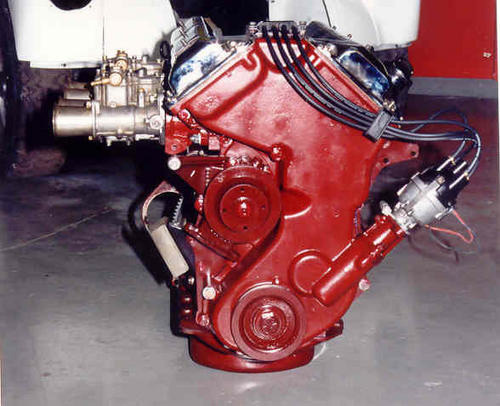
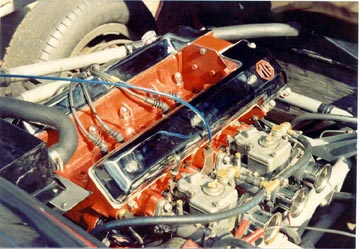
An MGA did win it's class (and 23rd overall) at Sebring in 1957, but, it was a pushrod car, not a twin cam.
It was driven by Canadian Ed Leavans, and Alen Millar. The car is alive and well, and I've been vintage racing it for the last 8 years or so at various events in Canada and the US

bmw327
New Reader
2/28/20 12:10 p.m.
My grandfather owned a twincam from new and rallied it extensively. I still have the number plate from the 1961 1000 mile rally run by the MG Car Club in NY. Dad had some 8mm movies of the car that aren't the best quality but they are digitized and well narrated.
https://www.youtube.com/watch?v=S1KSasnUpR0


wspohn
Dork
2/29/20 12:09 p.m.
Sebring61 said:
These were pushrod powered cars not Twin Cams though the engine blocks were 1622 castings under bored to 1588 and there were no water passages between the block and head so they could run without a head gasket.
Thanks for posting that - I hadn't seen a pic of a dry decked block before. They started doing that prewar on the blown cars and apparently some poor apprentice was designated to do the final lapping in by sitting there rubbing the head against the block using a bunch of valve grinding abrasive.

In February 1965 I was a 20 year-old who had been driving motorcycles since 16. I wanted a sportscar and saw a 1959 MGA for sale in London. It was a red coupe with a twin-cam engine. I bought it for 350 pounds on the "hire-purchase". It sat for a while because I failed my driving test. In the summer of 1965 I drove along with my friend's MG TF from London to the Yugoslav coast.
The MG TF preferred to cruise at around 65mph. This was very boring for me, so when a Porsche 911S Targa went by at around 100mph I decided to give chase on the Austrian autobahm. Never caught up to the 911 but travelled down the road at 100+ for several minutes. Then on a long downhill section I got the engine up to the 7000 redline, the speedometer was pegged at the 120mph limit.
I new this was not good, so pulled over to check the oil. I carried oil in a gallon can because it used oil at an alarming rate. I put at least 3 quarts in.
The car had 40k when I bought it and I drove it for another 20k in the nearly 2 years I owned it. I was young and it took all my money to keep it going. But as my first car it has great memories.
I've been vintage racing my twin cam for nearly 20 years. The only catastrophic engine failure was about 15 years ago when an over stressed original bottom end fastener failed and a connecting rod put a whole in the side of the block.
In my opinion the twin cam version of the MGA is equivalent to the ZR1 upgrade of the basic Corvette.
Today the basic push rod MGA's have been upgraded with MGB brakes, transmissions and engines so the advantage has disappeared.
Many push rod MGA racers build highly stressed super high compression engines without reserve as replacement parts are available at a reasonable cost. Not so for the twin cam whose many parts are unavailable at any price.
Safety Fast!
What a cool post, and the first picture is awesome!
Nice article on the Twin Cam. Do note that the 1500 B-series engine wasn't new for the MGA, MG first introduced the 1500 in 1953 for the ZA Magnette, which was in production in 1954, and was off and doing rally duty before the MGA was introduced in 1955. The original MGA used other parts from the Z as well, such as the transmission and drum brakes. ZB Production got the slightly upgraded 1500, and ran from 1956-1958.
My Twin-cam experience started wanting an MG with more power than my 1958 MGA. BMC in Berkely, CA. had a 1960 (old taillights, so it was probably a 1959 model) in Red with a Black interior. I liked the car, but the car did not my style of driving. It seems I was always fouling the sparkplugs. I eventully changed to a different heat range on the plugs. The engine did rev, and was fun to drive. After having a problem with the cam chains, I gave up and decided the Twin-cam was not for me. I traded it in of a 1962 MG Miget.
Displaying 1-10 of 11 commentsView all comments on the CMS forums
You'll need to log in to post.

















